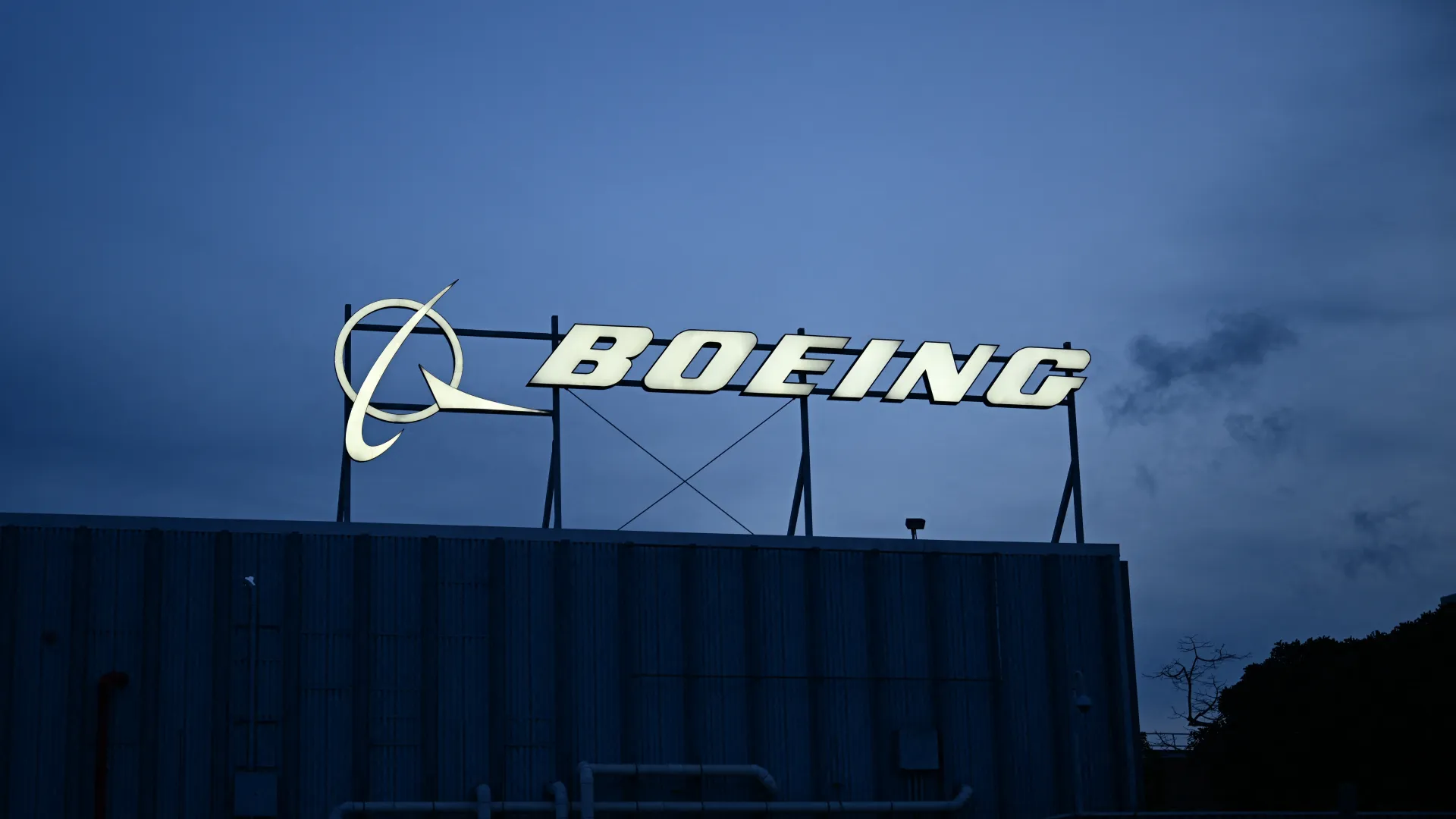
Boeing, a leader in the aerospace industry, has a rich history marked by innovation and significant contributions to both commercial and military aviation. From the advanced materials used in their aircraft to their commitment to safety and environmental initiatives, Boeing continues to shape the future of air travel. Here are some intriguing facts that highlight key aspects of Boeing’s legacy and ongoing advancements in aviation technology.
Founded: Boeing was founded on July 15, 1916, by William E. Boeing in Seattle, Washington. Initially named Pacific Aero Products Co., the company was established to manufacture seaplanes. The name was changed to Boeing Airplane Company in 1917. William E. Boeing, a timber magnate, was inspired to enter the aviation industry after witnessing a seaplane flight. His vision led to the development of various aircraft that would play significant roles in both World War I and the commercial aviation sector.
First Aircraft: The Boeing Model 1, also known as the B&W Seaplane, was the company’s first aircraft, built in 1916. Designed in collaboration with mechanic Conrad Westervelt, the seaplane was a biplane that featured a wooden structure and fabric covering. It had a wingspan of 40 feet (12.2 meters) and was powered by a 100-horsepower engine. This aircraft marked Boeing’s entry into the aviation market and set the foundation for future innovations in aircraft design.
Commercial Jetliner: The Boeing 707, introduced in 1958, was the first commercially successful jetliner and revolutionized air travel. With its sleek design and ability to fly long distances at high speeds, the 707 made international travel more accessible. It had a maximum seating capacity of 219 passengers in a typical two-class configuration and could fly up to 5,000 miles (8,000 kilometers) without refueling. The 707’s introduction marked the beginning of the jet age and transformed the airline industry, leading to increased competition and lower fares.
Largest Passenger Aircraft: The Boeing 747, also known as the “Jumbo Jet,” was first flown in 1969 and is 231 feet long (70.6 meters) in its 747-8 variant. This aircraft was revolutionary for its time, featuring a distinctive hump on the upper deck and the ability to carry more passengers than any previous airliner, with a maximum capacity of around 660 passengers in a single-class configuration. The 747 was instrumental in democratizing air travel and is often credited with shaping the modern airline industry.
Record Sales: The Boeing 737 is the best-selling commercial jetliner in history, with over 10,000 units delivered as of 2020. First introduced in 1968, the 737 has undergone multiple upgrades and variations, including the Next Generation (NG) and MAX series. Its versatility, efficiency, and reliability have made it the aircraft of choice for airlines around the world, serving short-haul and medium-haul routes. The 737’s popularity has solidified Boeing’s position as a leader in the commercial aviation market.
Height Record: The Boeing 787 Dreamliner has a height of 56 feet 7 inches (17.3 meters). This modern aircraft is designed for long-haul flights and features advanced materials and technology that enhance fuel efficiency and passenger comfort. The 787 Dreamliner was introduced in 2011 and has a spacious cabin with larger windows and improved air quality. Its height allows for a comfortable cabin layout, contributing to a more enjoyable flying experience for passengers.
Weight: The maximum takeoff weight of the Boeing 777-300ER is approximately 775,000 pounds (351,534 kg). This aircraft, known for its long-range capabilities and powerful engines, can carry up to 550 passengers in a two-class configuration. The 777-300ER was introduced in 2004 and has become a favorite among airlines for its efficiency and reliability. Its large maximum takeoff weight allows it to operate on longer routes, connecting cities around the globe.
Longest Flight: The Boeing 787-9 Dreamliner holds the record for the longest flight by a commercial aircraft, flying 17,000 km (10,560 miles) non-stop from Auckland to Doha. This flight, operated by Qatar Airways, showcases the 787’s advanced aerodynamics and fuel efficiency, allowing airlines to connect distant cities without the need for refueling stops. The ability to undertake such long-haul flights has transformed international travel, enabling airlines to offer more direct routes.
Military Aircraft: The Boeing B-17 Flying Fortress was used extensively during World War II and had a wingspan of 103 feet 9 inches (31.6 meters). This heavy bomber was renowned for its durability and ability to sustain heavy damage while still returning home. The B-17 played a crucial role in strategic bombing campaigns over Europe, with its eight .50 caliber machine guns providing significant defensive capabilities. It became an iconic symbol of American air power during the war.
Space Exploration: Boeing is a major contractor for NASA and played a key role in the development of the Space Shuttle program. The company was responsible for the design and construction of the shuttle’s main engines and various structural components. The first Space Shuttle, Columbia, launched on April 12, 1981, marking the beginning of a new era in space exploration. Boeing also contributed to the International Space Station (ISS) and is involved in the development of the Space Launch System (SLS), which aims to enable future deep-space missions, including crewed missions to Mars. Boeing’s expertise in aerospace engineering has made it a vital partner in advancing human spaceflight capabilities.
Boeing 737 MAX: The Boeing 737 MAX was grounded worldwide in March 2019 after two fatal crashes, which raised significant concerns about its safety features and design. The crashes involved Lion Air Flight 610 and Ethiopian Airlines Flight 302, resulting in the tragic loss of 346 lives. Following the incidents, Boeing faced intense scrutiny from regulatory bodies and the public, leading to a comprehensive review of the aircraft’s Maneuvering Characteristics Augmentation System (MCAS). The grounding lasted for 20 months, during which Boeing worked to implement software updates and enhance pilot training protocols. The 737 MAX was cleared to return to service in late 2020, but the events have had lasting impacts on the company’s reputation and financial performance.
Aerospace Revenue: In 2020, Boeing reported revenue of approximately $58.2 billion, with a significant portion coming from its commercial airplanes division. The company faced challenges due to the COVID-19 pandemic, which severely affected air travel and demand for new aircraft. Despite these challenges, Boeing’s diverse portfolio, which includes defense, space, and services, helped stabilize its financial outlook. The commercial airplanes segment, which includes models like the 737 and 787, remains a key driver of Boeing’s revenue, contributing to its position as one of the largest aerospace manufacturers in the world.
Employees: As of 2020, Boeing employed around 141,000 people worldwide, making it one of the largest employers in the aerospace industry. The workforce includes engineers, technicians, and skilled laborers involved in various stages of aircraft design, manufacturing, and support. Boeing’s commitment to workforce development includes training programs and partnerships with educational institutions to ensure a skilled labor force that can meet the evolving demands of the aerospace sector. The company has also faced challenges related to layoffs and restructuring efforts in response to market conditions, particularly during the pandemic.
Global Presence: Boeing has manufacturing facilities in over 65 countries and customers in more than 150 countries. This extensive global reach allows Boeing to tap into diverse markets and collaborate with a wide range of suppliers and partners. The company’s international operations include assembly plants, research and development centers, and service facilities, which enhance its ability to deliver products and services tailored to local needs. Boeing’s global presence also reflects its commitment to fostering international partnerships and contributing to the growth of the aviation industry worldwide.
Largest Cargo Aircraft: The Boeing 747-8F is the largest cargo aircraft in the world, with a maximum payload capacity of 140 metric tons (approximately 307,000 pounds). This freighter version of the iconic 747-8 features a unique nose that can be raised to facilitate the loading and unloading of oversized cargo. The 747-8F is equipped with advanced technology for fuel efficiency and operational performance, making it a preferred choice for cargo airlines. Its ability to transport large volumes of goods across long distances has made it a vital asset in global supply chains, especially in times of increased demand for air freight services.
First Supersonic Transport: Boeing was involved in the development of the Boeing 2707, a proposed supersonic transport that was ultimately canceled. Announced in the 1960s, the 2707 was designed to carry up to 300 passengers at speeds exceeding Mach 2. However, the project faced numerous challenges, including rising development costs, environmental concerns, and competition from the Concorde. Ultimately, the 2707 was abandoned in 1971, reflecting the difficulties of bringing supersonic commercial travel to market. Despite this setback, Boeing’s efforts in this area contributed to advancements in aerodynamics and materials science.
Boeing 787 Production: The first Boeing 787 was delivered in September 2011, after years of delays and development challenges. The 787 Dreamliner was designed to be a game-changer in the aviation industry, utilizing composite materials to reduce weight and improve fuel efficiency. The aircraft can fly up to 8,000 nautical miles (approximately 15,000 kilometers) and offers a range of seating configurations to accommodate different airline needs. The production of the 787 involves a global supply chain, with parts sourced from various countries, highlighting Boeing’s international collaboration and innovation in modern aircraft manufacturing.
Innovative Materials: The Boeing 787 Dreamliner stands out in the aviation industry for its extensive use of composite materials, which make up approximately 50% of the aircraft’s structure. These materials, primarily carbon-fiber-reinforced polymer, contribute to a lighter airframe compared to traditional aluminum structures. This reduction in weight plays a crucial role in enhancing fuel efficiency, allowing the 787 to consume about 20% less fuel than similarly sized aircraft. The innovative design not only improves operational efficiency but also reduces carbon emissions, aligning with the industry’s goal of sustainable aviation.
Boeing’s Logo: The iconic Boeing logo, first introduced in 1929, has undergone several redesigns over the decades, reflecting changes in the company’s branding and market positioning. The original logo featured a stylized depiction of a biplane, which has evolved into a more modern and streamlined design. The current logo is characterized by its simple, bold font and a distinctive blue color that conveys a sense of reliability and innovation. Each iteration of the logo has aimed to capture Boeing’s legacy in aviation while appealing to contemporary audiences, representing the company’s growth and technological advancements.
Environmental Initiatives: Boeing has set an ambitious goal to reduce greenhouse gas emissions from its commercial airplanes by 50% by the year 2050, using 2005 levels as a baseline. This commitment reflects a growing awareness of environmental issues within the aviation sector and aims to address the industry’s impact on climate change. Boeing is investing in research and development of more fuel-efficient engines, sustainable aviation fuels, and advanced aerodynamics to achieve this target. By prioritizing sustainability, Boeing is positioning itself as a leader in the transition towards greener aviation practices.
Boeing 777X: The Boeing 777X, which made its first flight on January 25, 2020, is a significant advancement in long-haul aviation, featuring the world’s largest turbofan engines. These new engines, known as the GE9X, are designed to be more fuel-efficient and quieter than their predecessors. The 777X also incorporates cutting-edge technology, such as folding wingtips, which allow for a longer wingspan while ensuring compatibility with airport gate requirements. This aircraft is expected to deliver improved operational efficiency and passenger comfort, making it a competitive choice for airlines operating long-distance routes.
Military Contracts: Boeing is recognized as one of the largest defense contractors globally, with military contracts totaling over $26 billion in 2020. The company provides a wide range of products and services to military customers, including fighter jets, helicopters, unmanned aerial vehicles, and advanced missile systems. Boeing’s defense division plays a critical role in national security and defense capabilities, continually innovating to meet the evolving needs of military operations. This substantial revenue from defense contracts highlights Boeing’s dual role as a leader in both commercial and military aviation.
Boeing 787-10: The Boeing 787-10 is the largest variant of the Dreamliner family, capable of carrying up to 330 passengers in a typical two-class configuration. This aircraft is designed for efficiency and comfort, featuring a spacious cabin with larger windows, improved air quality, and quieter cabins, enhancing the flying experience for passengers. The 787-10’s optimized aerodynamics and advanced engines contribute to its fuel efficiency, making it an attractive option for airlines seeking to reduce operational costs while providing a modern travel experience.
First Woman CEO: In 2021, David Calhoun took over as CEO of Boeing, following the tenure of Dennis Muilenburg, who was the first to lead the company through a crisis marked by the grounding of the 737 MAX. While not a woman, Muilenburg’s leadership during this challenging period was significant, and it highlighted the complexities of managing a major aerospace company. The discussion around leadership diversity has become increasingly prominent, with many advocating for greater representation of women and minorities in executive roles within the industry, marking a shift towards more inclusive corporate governance.
Boeing’s Contribution to Aviation Safety: Boeing has invested more than $1 billion in safety initiatives and research aimed at enhancing aviation safety. This investment encompasses a wide range of activities, including the development of advanced safety technologies, rigorous testing protocols, and collaborative efforts with regulatory bodies. Boeing’s commitment to safety is evident in its focus on creating systems that prevent accidents and improve pilot training. By prioritizing safety, Boeing aims to maintain public trust and ensure that air travel remains one of the safest modes of transportation available.
FAQs About Boeing
Boeing as a Company
Q: What does Boeing do? A: Boeing is a leading global aerospace company that designs, manufactures, and services commercial airplanes, defense products, and space systems. It also provides various services including leasing and training.
Q: Where is Boeing headquartered? A: Boeing’s global headquarters is located in Chicago, Illinois, United States. However, it has major operations and facilities spread across the world.
Q: Who are Boeing’s main competitors? A: Boeing’s primary competitors in the commercial aviation industry include Airbus. In the defense and space sectors, major competitors include Lockheed Martin, Raytheon Technologies, and Northrop Grumman.
Q: How does Boeing contribute to the economy? A: Boeing is a significant economic driver, contributing billions to the global economy. It supports millions of jobs directly and indirectly through its supply chain and related industries.
Boeing Products and Services
Q: What are Boeing’s most famous airplanes? A: Boeing has produced numerous iconic aircraft, including the 707, 727, 737, 747, 757, 767, 777, and 787 Dreamliner. These aircraft have revolutionized commercial aviation.
Q: What is the difference between Boeing’s narrow-body and wide-body airplanes? A: Narrow-body airplanes, like the 737, are typically smaller and designed for shorter to medium-range flights. Wide-body airplanes, such as the 777, are larger with wider fuselages, accommodating more passengers and offering longer-range capabilities.
Q: What is Boeing doing in the space industry? A: Boeing is a major player in the space industry, providing various products and services. It builds commercial and military satellites, launch vehicles, and space systems. Boeing also participates in human spaceflight programs and exploration missions.
Boeing and the Aviation Industry
Q: What is Boeing’s role in aviation safety? A: Boeing prioritizes aviation safety and invests heavily in research and development to enhance aircraft safety. It works closely with regulatory authorities and airlines to identify and address potential safety issues.
Q: How does Boeing address environmental concerns? A: Boeing is committed to sustainability and reducing the environmental impact of aviation. It focuses on developing more fuel-efficient aircraft, exploring alternative fuels, and implementing sustainable manufacturing practices.
Q: What is the future of aviation according to Boeing? A: Boeing envisions a future of aviation characterized by increased connectivity, automation, and sustainability. The company is investing in technologies like electric and hybrid-electric propulsion, advanced air mobility, and autonomous flight.
Boeing and Public Relations
Q: How has Boeing handled recent crises? A: Boeing has faced significant challenges in recent years, including the 737 MAX crashes. The company has implemented various measures to improve safety, regain public trust, and enhance its crisis management capabilities.
Q: What is Boeing’s stance on labor unions? A: Boeing has a complex relationship with labor unions. While there have been periods of conflict, the company also collaborates with unions on various issues to ensure efficient operations and employee well-being.








